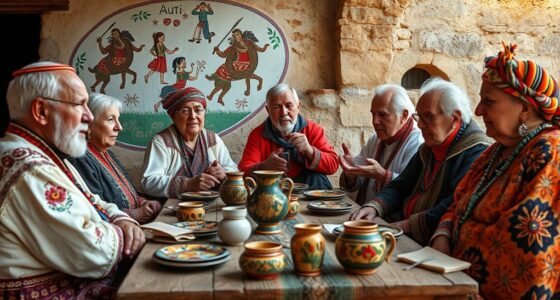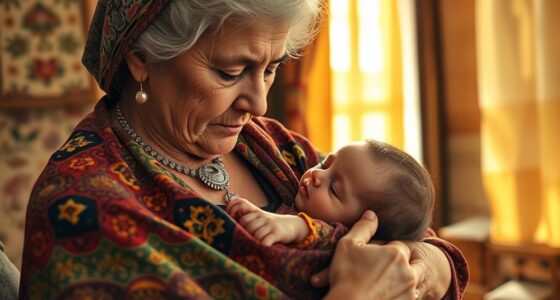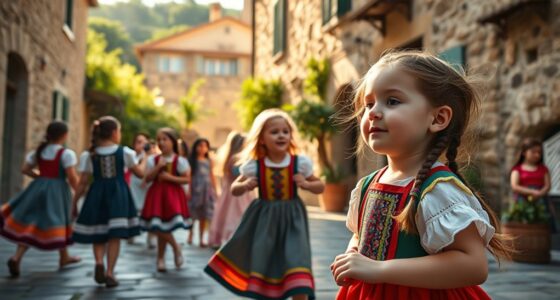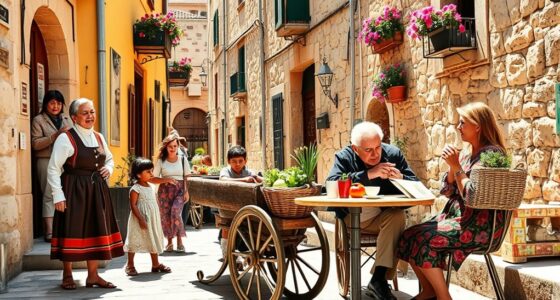Tourism markedly boosts Sardinia’s rural communities by creating jobs, increasing property values, and fostering cultural exchange. However, it also brings challenges like coastal erosion, pollution, and strained resources that threaten natural and cultural sites. To sustain these benefits, many communities are improving infrastructure, promoting eco-friendly practices, and involving locals in tourism planning. Continuing your exploration will show you how Sardinia is working to balance growth with preservation for long-term success.
Key Takeaways
- Tourism boosts Sardinia’s rural economies through job creation and increased property values, attracting foreign investment.
- Excessive tourist activity causes environmental degradation, including coastal erosion, pollution, and water resource strain.
- Cultural traditions are preserved and promoted via investments in historical sites and community-led tourism initiatives.
- Infrastructure and walkability projects improve accessibility, encouraging sustainable, slow tourism in rural areas.
- Balancing growth with sustainability involves promoting eco-friendly practices and community involvement to protect local ecosystems and heritage.
Growing Tourist Numbers and Economic Opportunities
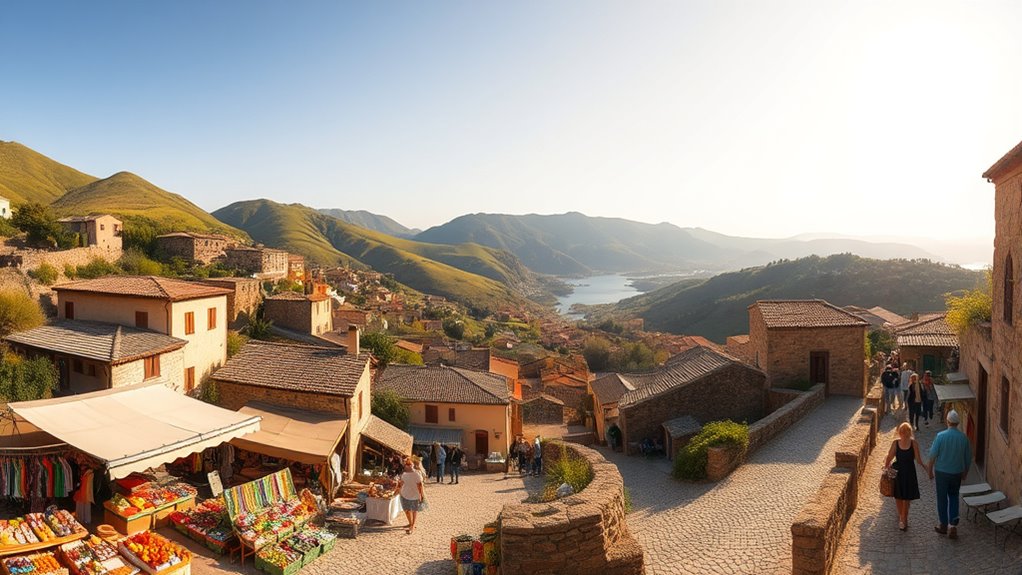
As Sardinia’s tourist numbers continue to rise, the island benefits from unprecedented economic opportunities. Over a million visitors now explore its shores each year, fueling the growth of one of its fastest-growing sectors. This influx boosts the regional economy by creating jobs across hospitality, services, and supporting industries like agriculture. International tourists, especially from Germany and France, help elevate Sardinia’s global reputation through travel features and rankings. Increased tourism investment improves infrastructure in rural areas, supporting local communities and fostering rural employment. Property values have steadily risen by 2.68% annually since 2019, attracting foreign investors and making Sardinia a promising real estate market. Additionally, the emphasis on organized tourism encourages sustainable practices that preserve the island’s natural beauty while promoting economic growth. Overall, tourism acts as a catalyst for economic development, benefiting both urban centers and rural communities alike.
Environmental Challenges and Land Use Concerns
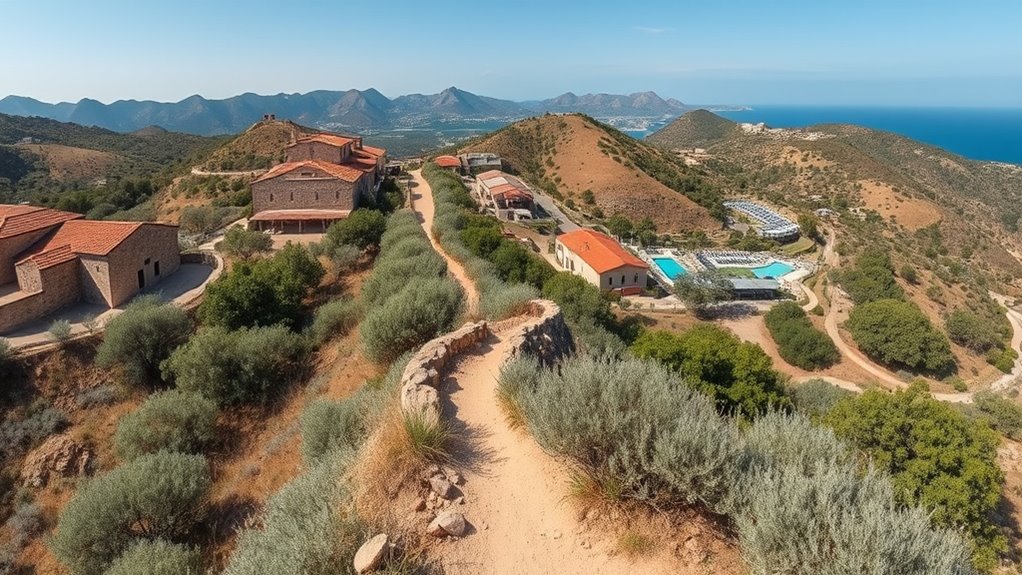
Tourism in Sardinia has led to significant environmental challenges, particularly concerning land use and coastal ecosystems. Heavy foot traffic and frequent beach visits cause erosion and threaten marine habitats through littering and pollution. Sensitive coastal areas face destruction, risking biodiversity and local fisheries. To combat these issues, measures like banning plastic bags and encouraging eco-friendly practices are implemented. To understand these challenges better:
Tourism impacts Sardinia’s coastlines, causing erosion, pollution, and ecological damage needing sustainable solutions.
- Coastal erosion accelerates due to tourist activity, damaging beaches and habitats.
- Pollution from litter and waste endangers marine life and degrades natural beauty.
- Limited water resources are strained, especially during peak seasons, impacting local communities.
- Overtourism has intensified these pressures, making sustainable management essential for the preservation of Sardinia’s natural landscapes and rural livelihoods.
- Implementing environmentally responsible tourism practices is crucial to reducing the ecological footprint and ensuring the long-term health of the island’s ecosystems.
Cultural Preservation and Community Dynamics
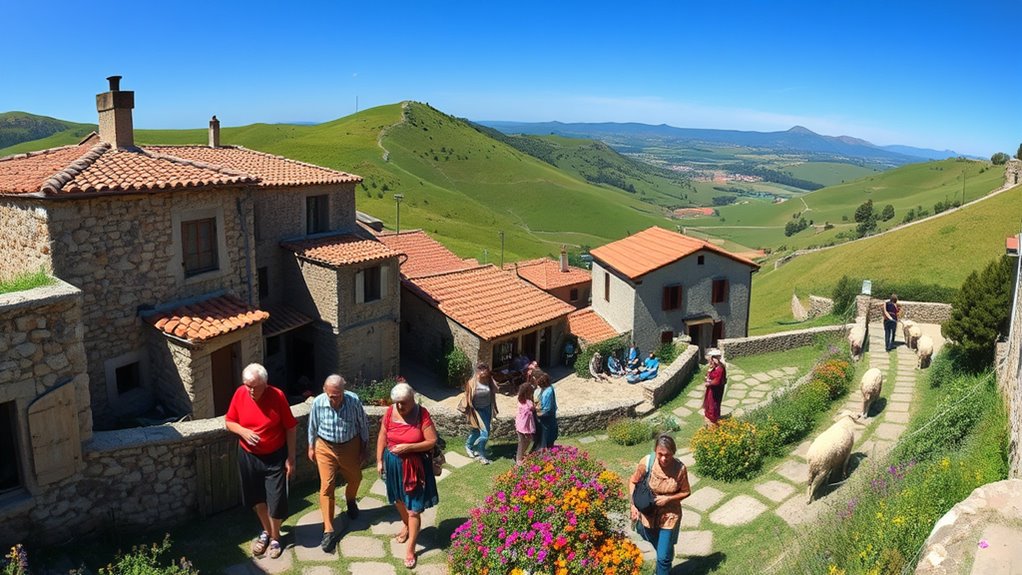
Cultural preservation in Sardinia benefits considerably from rural tourism, which creates demand for authentic experiences rooted in local traditions, crafts, and festivals. You’ll see how agritourism and cultural itineraries showcase vernacular architecture and rural lifestyles, helping prevent the erosion of local identity. Tourism also drives investments in restoring historical sites and maintaining landscape features crucial to community memory. By involving residents in creating tourism experiences, communities pass down oral histories and customs, strengthening cultural continuity. Increased tourism fosters social interactions, encouraging intercultural dialogue and mutual understanding. It can boost local pride but also risks commodifying traditions, leading to potential loss of authenticity. Overall, tourism shapes community dynamics, balancing preservation with adaptation, and offers opportunities for economic empowerment through cultural engagement. Furthermore, the development of cultural tourism initiatives often involves complex stakeholder networks that aim to promote systemic cultural value within the territorial and relational context. Additionally, the integration of cultural heritage preservation strategies helps ensure that local traditions are maintained and respected amid tourism development.
Development of Infrastructure and Walkability Initiatives
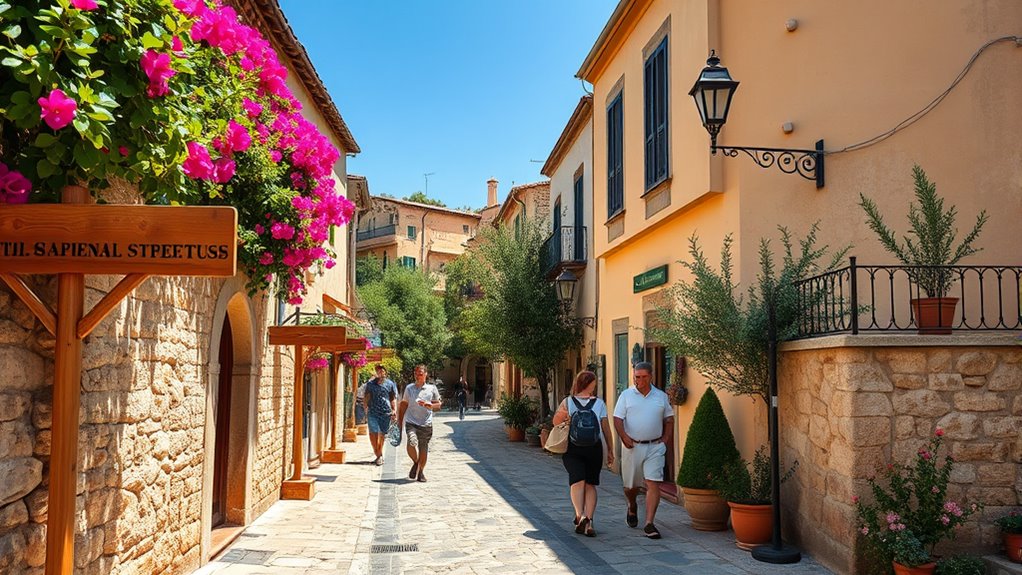
Investments in infrastructure are transforming Sardinia’s rural communities by enhancing connectivity and accessibility. These upgrades support economic diversification, improve essential services, and conserve rural heritage. You’ll notice better ICT infrastructure, boosting internet access for around 195,000 residents and supporting tourism promotion. Walkability initiatives focus on creating microcircuits and networking systems that connect cultural and natural attractions through walkable routes. Projects like Stop Places (SPs) aim to establish walkable hubs, encouraging slow tourism and reducing environmental impact. Property prices in rural areas have shown a steady increase, reflecting the growing interest in sustainable and eco-friendly tourism development. Key improvements include: 1. Expanding green infrastructure to support pedestrians and cyclists. 2. Connecting villages and rural sites, fostering landscape conservation. 3. Increasing tourist stays, spending, and property values by making rural areas more accessible. Additionally, digital connectivity plays a crucial role in integrating rural communities into broader economic networks, further supporting sustainable development.
Strategies for Sustainable Rural Tourism
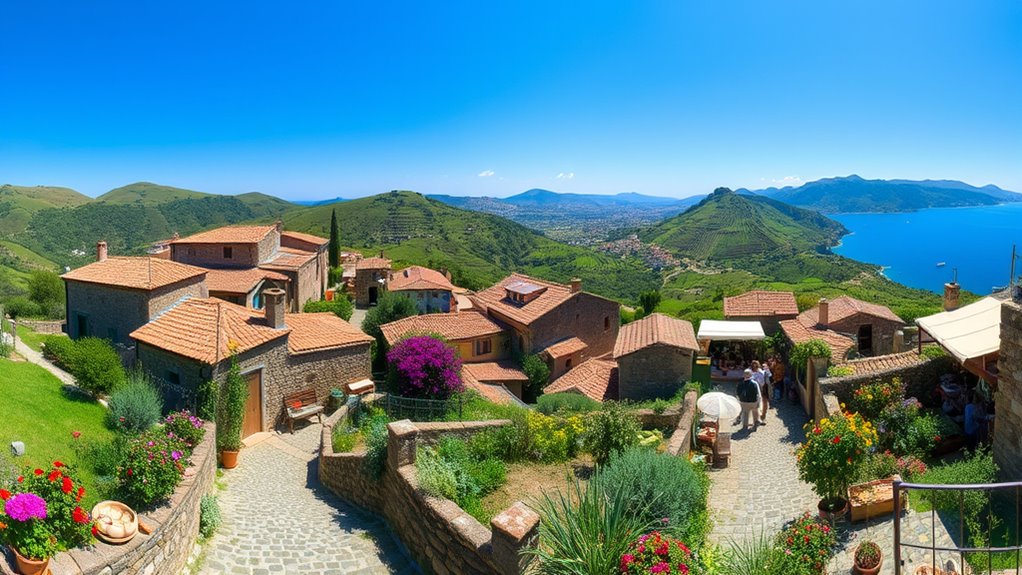
Implementing sustainable rural tourism strategies is essential for balancing economic benefits with environmental and social responsibility. You should focus on making tourism inclusive by improving infrastructure for visitors with disabilities and ensuring accessible information is widespread. Developing local cultural and environmental awareness through tailored itineraries and community-based programs can deepen visitor engagement while preserving Sardinia’s heritage. Empowering communities to manage tourism activities fosters local economic sustainability and authentic experiences, especially through agritourism. Promoting eco-friendly practices in accommodations and transportation helps protect natural resources. Utilizing tools like GIS can aid in managing visitor flows and conserving ecosystems. Research shows that technological tools like GIS are effective in managing visitor flows and conserving ecosystems. Ultimately, strategic marketing emphasizing sustainability and local uniqueness will attract responsible travelers, ensuring that tourism benefits both communities and the environment for the long term.
Frequently Asked Questions
How Do Rural Communities Perceive the Long-Term Effects of Tourism?
You might see rural communities as hopeful about tourism’s long-term benefits, like economic growth and cultural preservation. However, they also worry about negative effects, such as environmental degradation, rising living costs, and loss of local traditions. While some embrace sustainable tourism, others fear overdevelopment and social changes that could undermine community cohesion and traditional ways of life over time.
What Measures Are in Place to Protect Local Traditions From Commercialization?
To protect local traditions from commercialization, measures include visitor caps at popular sites, strict bans on harmful behaviors, and hefty fines for violations. Digital reservation systems help control overcrowding, while community-led initiatives promote authentic experiences like farm stays and cultural festivals. Additionally, laws regulate tourism activities and enforce penalties against exploitation. Educational campaigns encourage respectful behavior, ensuring that tourism supports rather than erodes your community’s cultural heritage.
How Does Tourism Influence Employment Opportunities Beyond Seasonal Work?
Have you ever wondered how tourism creates stable jobs beyond the busy season? It helps by boosting permanent employment in services like hospitality, arts, and leisure. Initiatives like rural diversification and infrastructure improvements foster non-seasonal opportunities, including remote work and small businesses. As tourism grows, more locals find lasting employment, reducing reliance on seasonal work. Don’t you think this shift benefits communities by offering more security and economic resilience?
Are Local Residents Involved in Tourism Planning and Decision-Making Processes?
You might wonder if local residents get involved in tourism planning and decision-making. In Sardinia, there’s a strong push for community participation through participatory frameworks, meetings, and digital platforms. Local residents often contribute ideas at the municipal level, especially in planning and valorization activities. However, their influence can vary, with some decisions still relying on traditional contracts. Overall, efforts are ongoing to increase genuine resident engagement in shaping tourism development.
What Are the Most Effective Ways to Balance Environmental Preservation With Tourism Growth?
Balancing environmental preservation with tourism growth requires you to implement strict resource regulations and monitor their use. Prioritize eco-friendly infrastructure, promote responsible tourist behavior, and control visitor numbers through zoning and seasonal limits. Engage local communities in planning and incentivize sustainable practices. By integrating these strategies, you’ll safeguard natural sites, reduce pollution, and ensure tourism benefits your community without compromising Sardinia’s ecological integrity.
Conclusion
As you explore Sardinia’s rural heart, remember it’s a delicate dance between growth and preservation. Tourism blooms like wildflowers, bringing both vibrant opportunities and thorny challenges. By treading thoughtfully, you can help guarantee these communities flourish like ancient olive trees—steadfast and resilient. Embrace sustainable practices, and you’ll become a steward of this island’s soul, ensuring its beauty and culture continue to shine bright amidst the waves of change.


